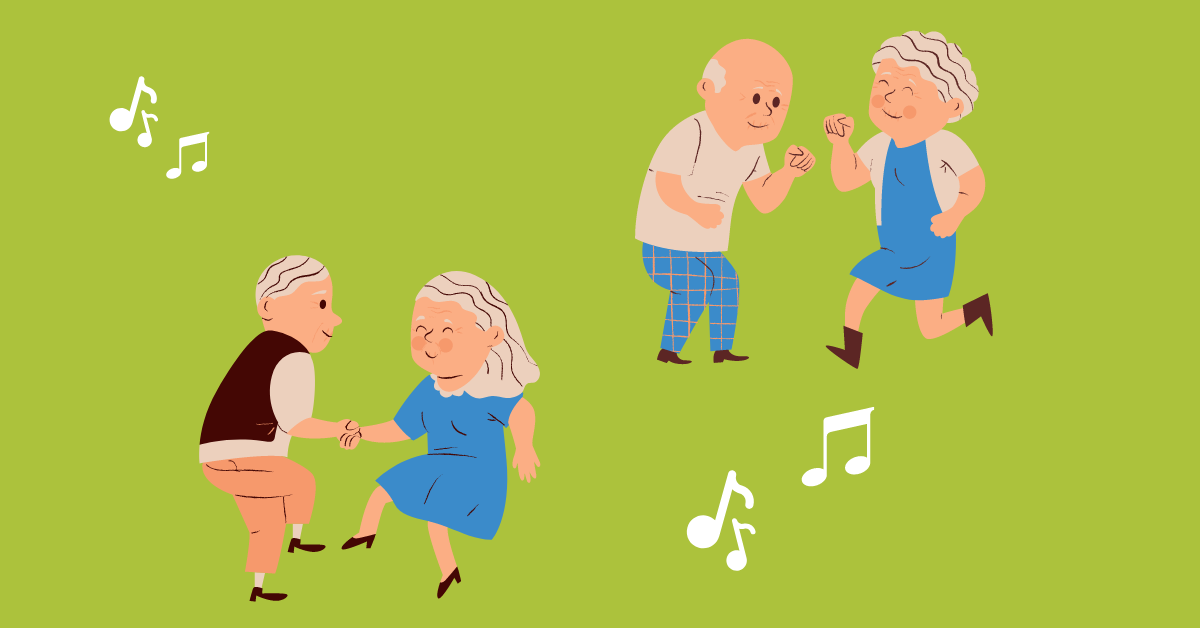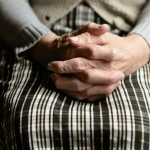Dancing isn’t just fun. For seniors, it can also actively strengthen the senses and the body. Read on to find out how tango and co. can have a positive effect, especially in old age.
Tango, waltz and cha-cha can be so much more than just a hobby. This knowledge was already shared by ancient philosophers, such as Augustine of Hippo, in their statements: „I praise the dance that demands and promotes everything – health and clarity of mind, as well as a buoyant soul.“ Modern, medical research confirms the ancient wisdom. Dancing not only strengthens the circulatory system and the human muscular system. Those who swing the dance leg can prevent diseases. It also brings joie de vivre and variety to the daily lives of seniors.
Strengthening the circulatory system and muscles
Dancing is an active sport. But unlike many sports, dancers often don’t even realize how much they are moving. When the mind is occupied with the dance steps and people become one with the music, the positive effects of the sport come almost incidentally. Muscle groups, especially in the legs, buttocks, shoulders and back, are trained and the cardiovascular system activated. And so dancers burn almost 400 calories in just one hour on the dance floor.
Almost casually, seniors can keep their bodies fit in dance and train muscle groups that are important for everyday life. This not only makes them more resilient. They can also prevent serious falls and their consequences. Patricia McKinley’s study at Canada’s McGill University in Montreal, for example, shows that tango can be a much more useful balance training for older people at risk of falling than traditional gait training. „Both approaches are suitable for increasing strength and walking speed. With tango, however, measurably greater gains in balance skills result,“ she said of her research findings in Canada.
Even age-related aches and pains, such as a weak knee or osteoarthritis, should not keep dance enthusiasts from exercising. After all, dancing can have a soothing effect if a qualified professional correctly assesses the limits and existing movement possibilities of the individual and adapts the steps accordingly. After a few dance lessons, seniors are often amazed at how quickly and well they can move.
Forming new neurons
You never stop learning when you dance – new step sequences, different tunes. „It has been scientifically proven that dancing has a positive effect on thinking performance,“ Provita says of the sport on its website. The combination of music, touch and movement exercises the brain, challenges and encourages concentration and coordination in those who dance. And it can have a healing effect. According to a study conducted by Madeleine Hackney at Washington University in St. Louis, dancing can alleviate the symptoms of Parkinson’s disease. Automatic movements that are no longer possible over time can be specifically retrained.
But salsa or waltzing can work wonders not only for Parkinson’s disease. „Dancing promotes the formation of new nerve cells into old age,“ says Provita. Constantly learning new steps thus serves as wonderful memory training and can reduce the risk of dementia by up to 20 percent. Regular training of short- and long-term memory through dance movements to old familiar tunes can halt progressive dementia, according to a Finnish study.
Boosting self-confidence and joie de vivre
Medical studies regularly report the positive effects of dancing. For example, it helps not only in the fight against dementia and Parkinson’s disease, but also to combat lethargy or mild depression. According to the Robert Koch Institute, around six percent of 70- to 79-year-old seniors suffer from the widespread disease. In comparison, the figure for the 18 to 79 age group is just under eight percent. Thus, depression is a serious illness, especially in old age. Dance is a therapy-accompanying possibility, in order to prepare depressive seniors again joy of life. According to a study by Colombian psychologist Cynthia Quiroga Murcia, the lively movements of the tango cause the body to reduce the stress hormone cortisol. And at the same time, it promotes the production of the happiness hormones dopamine and endorphin.
In addition, dancing means socializing – whether it’s active couple dancing or seated dancing in care groups. The company of people with the same interests can be refreshing, especially in old age, and a welcome change from everyday life. Successes, such as rehearsing a new choreography, can be celebrated together. And thereby increase the self-confidence and self-esteem of the individual.


